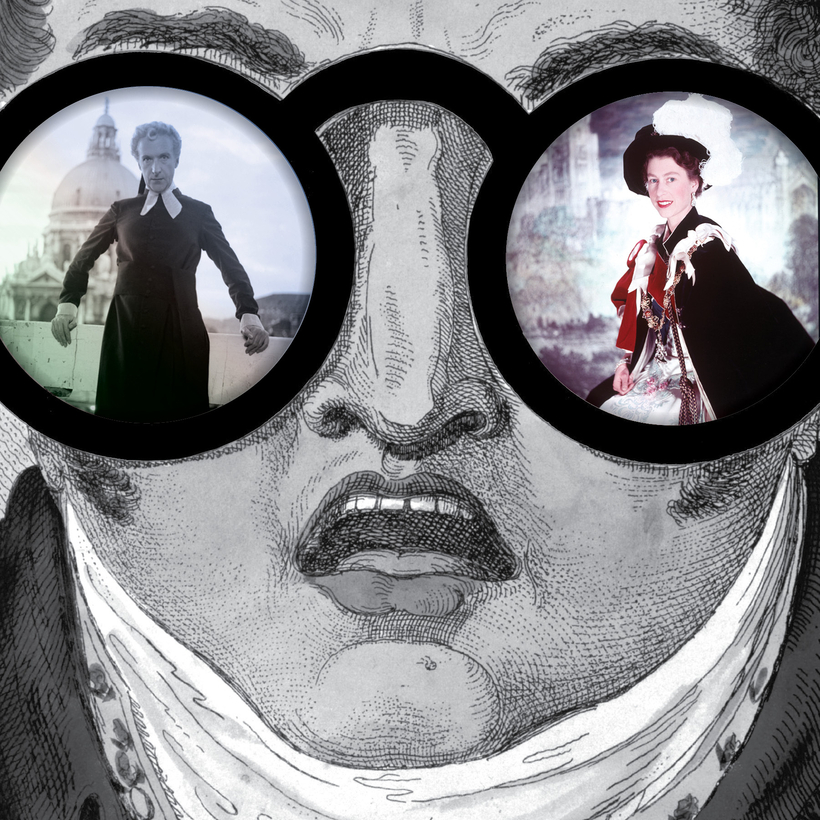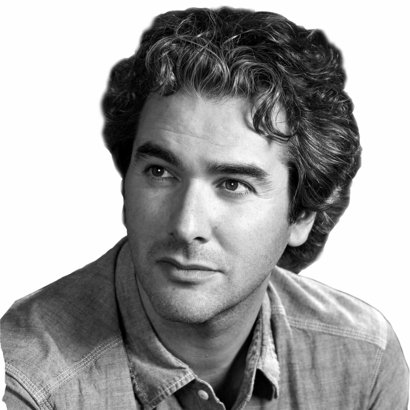From the early 1940s to the late 1960s, Cecil Beaton photographed Elizabeth in her roles as princess, queen, and mother. He would help create the image of her as a calm and serene figurehead of the country, and in doing so helped stabilize a monarchy that was tottering in the aftermath of the abdication crisis. Yet at first glance this self-described “terrible homosexualist” hardly seemed like the right person for the job.
The flamboyant Beaton had made his name photographing the Bright Young Things of the 1920s, extravagant high-living socialites such as the Mitford sisters, the Sitwell siblings, and Evelyn Waugh. His success with them saw him travel to New York, where he became the pre-eminent fashion photographer for Vanity Fair and Vogue, shooting everyone from Pablo Picasso to Katharine Hepburn in a style that mixed the stark experimentalism of Man Ray with a luscious theatricality.
And then disaster struck. In 1938 he drew a number of small sketches, which included tiny messages in the margins, to illustrate an article on New York society for Vogue. Two of them included anti-Semitic slurs. He apologized profusely, but his waspish nature had seen him burn bridges right across the United States. He was fired by Condé Nast personally.

Beaton returned to England, where war was imminent and his skills as an “eccentrically stylish popinjay” seemed superfluous. He appeared to be all washed up at the age of 35. But then, in July 1939, he received a phone call from a lady-in-waiting to Queen Elizabeth, the queen consort of King George VI. She wanted him to photograph her at Buckingham Palace.
It was a daring ask. As Beaton wrote in his diary, “It is inconceivable that her predecessor would have summoned me—my work was still considered revolutionary and unconventional.” But there was method to the future Queen Mother’s madness. The royal family was still recovering from Edward VIII’s abdicating the throne and marrying Wallis Simpson in 1936. Beaton was to help them create a whole new image.
His portrait of the Queen Mother in the palace gardens, wearing lustrous Norman Hartnell dresses and carrying a parasol, hearkened back to peaceful Edwardian times. It was quite the opposite to images of Wallis Simpson in her of-the-moment haute couture. As Hardy Amies, the future Queen’s dressmaker said, “There’s always something cold and rather cruel about chic clothes.” Beaton, who for so long had been the master photographer of the beau monde, would depict the royal family as warm and familiar.
The royal family was still recovering from Edward VII’s abdicating the throne and marrying Wallis Simpson in 1936. Beaton was to help them create a whole new image.
In 1942, he was asked to the palace again to photograph the Queen Mother with her two daughters, Elizabeth and Margaret. In sharp contrast to the romantic pre-war images, the princesses wore plain button-down blouses, modest strings of pearls, and their hair was simply done. This could have been any family in war-torn Britain. In another picture from the same year Elizabeth wears a jacket and cap with the insignia of the Grenadier Guards on it. Again, it’s a surprisingly casual picture. Her hat is tilted; she smiles freely. She seems just another girl being called up during wartime to do a man’s job.


Beaton’s photos were not overt propaganda; nevertheless, they were telling a story that was carefully calibrated for a nation at war. When he photographed the 18-year-old Princess Elizabeth again in March 1945, the story was quite different. Now peace was in sight, and the photo of the princess in a crinoline gown embroidered with sequins surrounded by splashes of flowers suggested joy and abundance to come.

The photo of Elizabeth’s coronation is perhaps Beaton’s best known, and most poignant. It shows the new Queen in her sumptuous robes and jewels of state. Beaton’s love of artifice is shown by her sitting in front of a “blow-up” photo of Westminster Abbey, a curtain pulled back, as if she is on a stage set. But it never really registers as phony to the passing eye, instead lending a heightened reality to the new Queen. As for the Queen herself, she is devoid of all pomp or pride. As Beaton wrote, “She has, about her, a certain humility and slow shyness but, at the same time, innate dignity, and one senses a quality of kindness.” In the days following her death this week, the same descriptions could easily have been repeated.


Beaton’s portraits of the Queen didn’t project grandeur, but instead a quiet stability. This was never more the case than in the photograph taken 15 years later, in 1968, in which the Queen is shown in a naval boat cloak, wearing no adornments, against a featureless blue backdrop. As empire shrank, Britain’s power ebbed, and changing morals, assassinations, and riots convulsed societies across the world, she looks out of the picture without hauteur, like a statue. She is unchanging, ever present, enduring. The still center of a loud and rancorous world.
To hear George Pendle reveal more about his story, listen to him on AIR MAIL’s Morning Meeting podcast
George Pendle is an Editor at Large for AIR MAIL. His book Strange Angel: The Otherworldly Life of Rocket Scientist John Whiteside Parsons became a television series for CBS All Access. He is also the author of Death: A Life and Happy Failure, among other books


